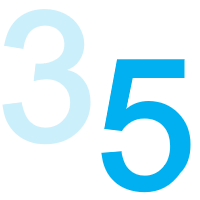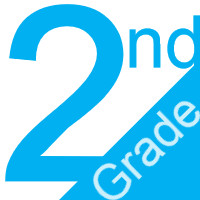2nd Grade English
 Standards Glossaries
Standards Glossaries
| K Grade English | 1st Grade English | 2nd Grade English |
 Standards Glossaries
Standards Glossaries
| 3rd Grade English | 4th Grade English | 5th Grade English |
 Standards Glossaries
Standards Glossaries
| 6th Grade English | 7th Grade English | 8th Grade English |
 Standards Glossaries
Standards Glossaries
| 9th Grade English | 10th Grade English | 11th Grade English | 12th Grade English |
 Standards Glossaries
Standards Glossaries
| HS Journalism | HS Speech |
| All categories |
(RF) READING FOUNDATIONS |
|---|
ELA-02.RF.04ELA-02.RF.04 Read with sufficient accuracy and fluency to support comprehension. Read grade level text with purpose and understanding.Sub-Standards:
a. Read grade level text with purpose and understanding.
b. Read grade level text orally with accuracy, appropriate rate, and expression on successive readings.
c. Use context to confirm or self-correct word recognition and understanding, rereading as necessary.
| |
(RI) READING INFORMATION |
|---|
ELA-02.RINarrative for Informational Reading Strand:The primary purpose of informational text (non-fiction) is to inform the reader about the natural or social world. Different from literaure (fiction), informational text does not utilize characters. In this strand students are expected to determine the topic (who or what the text is about). Students will also ask and answer questions about the topic of the text and retell details from informational text they hear. Informational text offers a variety of structures to assist the readers in finding information quickly and efficiently. These might include a table of contents, bold or italicized text, gloassaries, embedded definitions for specialized vocabulary, realistic illustrations of photos, captions and other labels, and graphs and charts. Continued work on reading comprehension standards will heighten student abilities to read more complex informational (nonfiction) text. Teachers use assessment and observation to determine if students are ready to progress to more challenging reading selections. Each child is unique, so be flexible, and trust your judgment as you assist your child. Together teachers and parents can help students make better choices when selecting books to read. Not all selections children read must be in the level suggested by assessment, these levels serve as a guideline. Sometimes high interest in a topic allows success in a more difficult text, and sometimes simple text is more inviting to our children, balance is important. Increasing the frequency of reading is the highest predictor of success at any grade level. Building a child’s confidence, through successful experiences with reading, will encourage that desire to read more. Developing successful, life-long readers is our ultimate goal. How to Help Your Child At Home with the Informational Text Strand:
Resources
Calculation Method for StrandsStrands are larger groups of related standards. The Strand Grade is a calculation of all the related standards. Click on the standard name below each strand to access the learning targets and proficiency scales for each strand's related standards. | |
ELA-02.RI.01 | |
ELA-02.RI.02 | |
ELA-02.RI.03
ELA-02.RI.03 Describe the connection between a series of historical events, scientific ideas or concepts, or steps in technical procedures in a text.Student Learning Targets:Knowledge Targets
Reasoning Targets
Skills (Performance) Targets
Proficiency ScaleThe student can ...1 Beginning... with help, demonstrates a partial understanding of some of the simpler details and processes (Score 2.0 content) and some of the more complex ideas and processes (Score 3.0 content).Start 2 Developing... demonstrates no major errors or omissions regarding the simpler details and processes but exhibits major errors or omissions regarding the more complex ideas and processes (Score 3.0 content).Simple 3 Proficient“The Standard.”... demonstrates no major errors or omissions regarding any of the information and processes that were end of instruction expectations. Target 4 Advanced... demonstrates in-depth inferences and applications regarding more complex material that go beyond end of instruction expectations.Complex ResourcesVocabulary
Websites
| |||
ELA-02.RI.04
ELA-02.RI.04 Determine the meaning of words and phrases in a text relevant to a grade 2 topic or subject area.Student Learning Targets:Knowledge Targets
Reasoning Targets
Skills (Performance) Targets
Proficiency ScaleThe student can ...1 Beginning... with help, demonstrates a partial understanding of some of the simpler details and processes (Score 2.0 content) and some of the more complex ideas and processes (Score 3.0 content).Start 2 Developing... demonstrates no major errors or omissions regarding the simpler details and processes but exhibits major errors or omissions regarding the more complex ideas and processes (Score 3.0 content).Simple 3 Proficient“The Standard.”... demonstrates no major errors or omissions regarding any of the information and processes that were end of instruction expectations. Target 4 Advanced... demonstrates in-depth inferences and applications regarding more complex material that go beyond end of instruction expectations.Complex ResourcesVocabulary
Websites
| |||
ELA-02.RI.05
ELA-02.RI.05 Know and use various text features (e.g., captions, bold print, subheadings, glossaries, indexes, electronic menus, icons) to locate key facts or information in a text efficiently.Student Learning Targets:Knowledge Targets
Reasoning Targets
Skills (Performance) Targets
Proficiency ScaleThe student can ...1 Beginning... with help, demonstrates a partial understanding of some of the simpler details and processes (Score 2.0 content) and some of the more complex ideas and processes (Score 3.0 content).... use and know text features of an informational (non-fiction) text. 2 Developing... demonstrates no major errors or omissions regarding the simpler details and processes but exhibits major errors or omissions regarding the more complex ideas and processes (Score 3.0 content).... identify text features and locate key facts in a text using text features. 3 Proficient“The Standard.”... demonstrates no major errors or omissions regarding any of the information and processes that were end of instruction expectations. ... identify text features and locate key facts in a text using the text features. 4 Advanced... demonstrates in-depth inferences and applications regarding more complex material that go beyond end of instruction expectations.... use text features an search tools (key words, hyperlinks) to locate relevant information in an informational (non-fiction) text. Rubric Scale
ResourcesVocabulary
Websites
| |||||||||||||||||||||||||||||||||||||||
ELA-02.RI.06
ELA-02.RI.06 Identify the main purpose of a text, including what the author wants to answer, explain, or describe.Student Learning Targets:Knowledge Targets
Reasoning Targets
Skills (Performance) Targets
Proficiency ScaleThe student can ...1 Beginning... with help, demonstrates a partial understanding of some of the simpler details and processes (Score 2.0 content) and some of the more complex ideas and processes (Score 3.0 content).Start 2 Developing... demonstrates no major errors or omissions regarding the simpler details and processes but exhibits major errors or omissions regarding the more complex ideas and processes (Score 3.0 content).Simple 3 Proficient“The Standard.”... demonstrates no major errors or omissions regarding any of the information and processes that were end of instruction expectations. Target 4 Advanced... demonstrates in-depth inferences and applications regarding more complex material that go beyond end of instruction expectations.Complex ResourcesVocabulary
Websites
| |||
ELA-02.RI.07
ELA-02.RI.07 Explain how specific images (e.g., a diagram showing how a machine works) contribute to and clarify a text.Student Learning Targets:Knowledge Targets
Reasoning Targets
Skills (Performance) Targets
Proficiency ScaleThe student can ...1 Beginning... with help, demonstrates a partial understanding of some of the simpler details and processes (Score 2.0 content) and some of the more complex ideas and processes (Score 3.0 content).Start 2 Developing... demonstrates no major errors or omissions regarding the simpler details and processes but exhibits major errors or omissions regarding the more complex ideas and processes (Score 3.0 content).Simple 3 Proficient“The Standard.”... demonstrates no major errors or omissions regarding any of the information and processes that were end of instruction expectations. Target 4 Advanced... demonstrates in-depth inferences and applications regarding more complex material that go beyond end of instruction expectations.Complex ResourcesVocabulary
Websites
| |||
ELA-02.RI.08
ELA-02.RI.08 Describe how reasons support specific points the author makes in a text.Student Learning Targets:Knowledge Targets
Reasoning Targets
Skills (Performance) Targets
Proficiency ScaleThe student can ...1 Beginning... with help, demonstrates a partial understanding of some of the simpler details and processes (Score 2.0 content) and some of the more complex ideas and processes (Score 3.0 content).Start 2 Developing... demonstrates no major errors or omissions regarding the simpler details and processes but exhibits major errors or omissions regarding the more complex ideas and processes (Score 3.0 content).Simple 3 Proficient“The Standard.”... demonstrates no major errors or omissions regarding any of the information and processes that were end of instruction expectations. Target 4 Advanced... demonstrates in-depth inferences and applications regarding more complex material that go beyond end of instruction expectations.Complex ResourcesVocabulary
Websites
| |||
ELA-02.RI.09
ELA-02.RI.09 Compare and contrast the most important points presented by two texts on the same topic.Student Learning Targets:Knowledge Targets
Reasoning Targets
Skills (Performance) Targets
Proficiency ScaleThe student can ...1 Beginning... with help, demonstrates a partial understanding of some of the simpler details and processes (Score 2.0 content) and some of the more complex ideas and processes (Score 3.0 content).Start 2 Developing... demonstrates no major errors or omissions regarding the simpler details and processes but exhibits major errors or omissions regarding the more complex ideas and processes (Score 3.0 content).Simple 3 Proficient“The Standard.”... demonstrates no major errors or omissions regarding any of the information and processes that were end of instruction expectations. Target 4 Advanced... demonstrates in-depth inferences and applications regarding more complex material that go beyond end of instruction expectations.Complex ResourcesVocabulary
Websites
| |||
ELA-02.RI.10
ELA-02.RI.10 By the end of year, read and comprehend informational texts, including history/social studies, science, and technical texts, in the grades 2-3 text complexity band proficiently, with scaffolding as needed at the high end of the range.Student Learning Targets:Knowledge Targets
Reasoning Targets
Skills (Performance) Targets
Proficiency ScaleThe student can ...1 Beginning... with help, demonstrates a partial understanding of some of the simpler details and processes (Score 2.0 content) and some of the more complex ideas and processes (Score 3.0 content).... read and comprehend informational (non-fiction) texts at an early 2nd grade independent reading range. 2 Developing... demonstrates no major errors or omissions regarding the simpler details and processes but exhibits major errors or omissions regarding the more complex ideas and processes (Score 3.0 content).... read and comprehend informational (non-fiction) texts at a middle 2nd grade independent reading range. 3 Proficient“The Standard.”... demonstrates no major errors or omissions regarding any of the information and processes that were end of instruction expectations. ... read and comprehend informational (non-fiction) texts at the end of 2nd grade independent reading range. 4 Advanced... demonstrates in-depth inferences and applications regarding more complex material that go beyond end of instruction expectations.... read and comprehend informational (non-fiction) texts at a middle 4th grade independent reading range. Rubric Scale
ResourcesVocabulary
Websites
| |||||||||||||||||||||||||||||||||||||||
(RL) READING LITERATURE |
|---|
ELA-02.RLNarrative for Literature Strand:Reading literature (fiction) allows students to learn about other lives and times that relate to their own personal experiences. In this strand, students will ask and answer questions about key details (characters, setting, plot), along with retelling what they have read. Literature (fiction) helps readers learn important life lessons through the lives of the characters, comparing their own experiences with the experiences of the characters they read about. Reading literature (fiction) allows us to learn to appreciate the beauty of the language, and to be articulate speakers and writers. Continued work on reading comprehension standards will heighten student abilities to read more complex literature (fiction) text. Teachers use assessment and observation to determine if students are ready to progress to more challenging reading selections. Each child is unique, so be flexible, and trust your judgment as you assist your child. Together teachers and parents can help students make better choices when selecting books to read. Not all selections children read must be in the level suggested by assessment, these levels serve as a guideline. Sometimes high interest in a topic allows success in a more difficult text, and sometimes simple text is more inviting to our children, balance is important. Increasing the frequency of reading is the highest predictor of success at any grade level. Building a child’s confidence, through successful experiences with reading, will encourage that desire to read more. Developing successful, life-long readers is our ultimate goal. How to Help Your Child At Home with the Literature Strand:
Resources:
Calculation Method for StrandsStrands are larger groups of related standards. The Strand Grade is a calculation of all the related standards. Click on the standard name below each strand to access the learning targets and proficiency scales for each strand's related standards. | |
ELA-02.RL.01 | |
ELA-02.RL.02
ELA-02.RL.02 Recount stories from a variety of genres and diverse cultures, and determine their central message, lesson, or moral. Central message = can be theme, a moral, or a specific kind of lesson to be learned.. | |
ELA-02.RL.03ELA-02.RL.03 Describe settings and how characters in a story, respond to major events and challenges.Student Learning Targets:Knowledge Targets
Reasoning Targets
Skills (Performance) Targets
Proficiency ScaleThe student can ...1 Beginning... with help, demonstrates a partial understanding of some of the simpler details and processes (Score 2.0 content) and some of the more complex ideas and processes (Score 3.0 content).Start 2 Developing... demonstrates no major errors or omissions regarding the simpler details and processes but exhibits major errors or omissions regarding the more complex ideas and processes (Score 3.0 content).Simple 3 Proficient“The Standard.”... demonstrates no major errors or omissions regarding any of the information and processes that were end of instruction expectations. Target 4 Advanced... demonstrates in-depth inferences and applications regarding more complex material that go beyond end of instruction expectations.Complex ResourcesVocabulary
Websites
| |||
ELA-02.RL.04
ELA-02.RL.04 Describe how words and phrases supply rhythm and meaning in a story, poem, or song.Student Learning Targets:Knowledge Targets
Reasoning Targets
Skills (Performance) Targets
Proficiency ScaleThe student can ...1 Beginning... with help, demonstrates a partial understanding of some of the simpler details and processes (Score 2.0 content) and some of the more complex ideas and processes (Score 3.0 content).Start 2 Developing... demonstrates no major errors or omissions regarding the simpler details and processes but exhibits major errors or omissions regarding the more complex ideas and processes (Score 3.0 content).Simple 3 Proficient“The Standard.”... demonstrates no major errors or omissions regarding any of the information and processes that were end of instruction expectations. Target 4 Advanced... demonstrates in-depth inferences and applications regarding more complex material that go beyond end of instruction expectations.Complex ResourcesVocabulary
Websites
| |||
ELA-02.RL.05
ELA-02.RL.05 Describe the overall structure of a story, including describing how the beginning introduces the story and the ending concludes the action.Student Learning Targets:Knowledge Targets
Reasoning Targets
Skills (Performance) Targets
Proficiency ScaleThe student can ...1 Beginning... with help, demonstrates a partial understanding of some of the simpler details and processes (Score 2.0 content) and some of the more complex ideas and processes (Score 3.0 content).Start 2 Developing... demonstrates no major errors or omissions regarding the simpler details and processes but exhibits major errors or omissions regarding the more complex ideas and processes (Score 3.0 content).Simple 3 Proficient“The Standard.”... demonstrates no major errors or omissions regarding any of the information and processes that were end of instruction expectations. Target 4 Advanced... demonstrates in-depth inferences and applications regarding more complex material that go beyond end of instruction expectations.Complex ResourcesVocabulary
Websites
| |||
ELA-02.RL.06
ELA-02.RL.06 Acknowledge differences in the points of view of characters, including by speaking in a different voice for each character when reading dialogue aloud.Student Learning Targets:Knowledge Targets
Reasoning Targets
Skills (Performance) Targets
Proficiency ScaleThe student can ...1 Beginning... with help, demonstrates a partial understanding of some of the simpler details and processes (Score 2.0 content) and some of the more complex ideas and processes (Score 3.0 content).Start 2 Developing... demonstrates no major errors or omissions regarding the simpler details and processes but exhibits major errors or omissions regarding the more complex ideas and processes (Score 3.0 content).Simple 3 Proficient“The Standard.”... demonstrates no major errors or omissions regarding any of the information and processes that were end of instruction expectations. Target 4 Advanced... demonstrates in-depth inferences and applications regarding more complex material that go beyond end of instruction expectations.Complex ResourcesVocabulary
Websites
| |||
ELA-02.RL.07
ELA-02.RL.07 Use information gained from the illustrations and words in a print or digital text to demonstrate understanding of its characters, setting, or plot.Student Learning Targets:Knowledge Targets
Reasoning Targets
Skills (Performance) Targets
Proficiency ScaleThe student can ...1 Beginning... with help, demonstrates a partial understanding of some of the simpler details and processes (Score 2.0 content) and some of the more complex ideas and processes (Score 3.0 content).Start 2 Developing... demonstrates no major errors or omissions regarding the simpler details and processes but exhibits major errors or omissions regarding the more complex ideas and processes (Score 3.0 content).Simple 3 Proficient“The Standard.”... demonstrates no major errors or omissions regarding any of the information and processes that were end of instruction expectations. Target 4 Advanced... demonstrates in-depth inferences and applications regarding more complex material that go beyond end of instruction expectations.Complex ResourcesVocabulary
Websites
| |||
ELA-02.RL.08 | |
ELA-02.RL.09
ELA-02.RL.09 Compare and contrast two or more versions of the same story by different authors or from different cultures.Student Learning Targets:Knowledge Targets
Reasoning Targets
Skills (Performance) Targets
Proficiency ScaleThe student can ...1 Beginning... with help, demonstrates a partial understanding of some of the simpler details and processes (Score 2.0 content) and some of the more complex ideas and processes (Score 3.0 content).Start 2 Developing... demonstrates no major errors or omissions regarding the simpler details and processes but exhibits major errors or omissions regarding the more complex ideas and processes (Score 3.0 content).Simple 3 Proficient“The Standard.”... demonstrates no major errors or omissions regarding any of the information and processes that were end of instruction expectations. Target 4 Advanced... demonstrates in-depth inferences and applications regarding more complex material that go beyond end of instruction expectations.Complex ResourcesVocabulary
Websites
| |||
ELA-02.RL.10
ELA-02.RL.10 By the end of the year, read and comprehend literature, including stories and poetry, on grade level proficiently and independently.Student Learning Targets:Knowledge Targets
Reasoning Targets
Skills (Performance) Targets
Proficiency ScaleThe student can ...1 Beginning... with help, demonstrates a partial understanding of some of the simpler details and processes (Score 2.0 content) and some of the more complex ideas and processes (Score 3.0 content).Start 2 Developing... demonstrates no major errors or omissions regarding the simpler details and processes but exhibits major errors or omissions regarding the more complex ideas and processes (Score 3.0 content).Simple 3 Proficient“The Standard.”... demonstrates no major errors or omissions regarding any of the information and processes that were end of instruction expectations. Target 4 Advanced... demonstrates in-depth inferences and applications regarding more complex material that go beyond end of instruction expectations.Complex ResourcesVocabulary
Websites
| |||
(SL) SPEAKING AND LISTENING |
|---|
ELA-02.SLNarrative for the Speaking and Listening StrandSpeaking and listening standards require students to develop a range of oral communication and interpersonal skills that facilitate various types of discussion and oral exchange. Students must learn to work together, express and listen carefully to ideas, and integrate information from various sources, (e.g., oral, visual, quantitative, and media). Students must also gain skills in evaluating what they hear, use various sources to support what they are communicating, and adapt their speech to the content and the task at hand.
How to help your child with the Speaking and Listening Standards:
Resources
Calculation Method for StrandsStrands are larger groups of related standards. The Strand Grade is a calculation of all the related standards. Click on the standard name below each strand to access the learning targets and proficiency scales for each strand's related standards. | |



 Grade 2
Grade 2